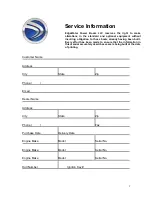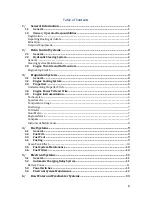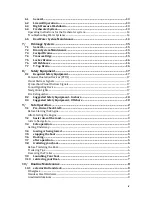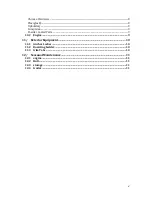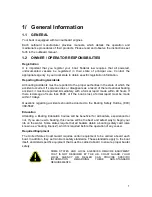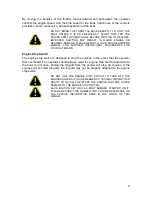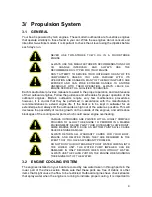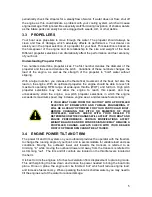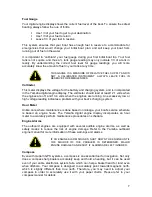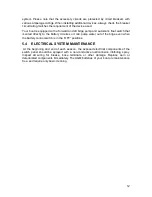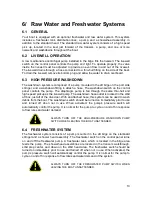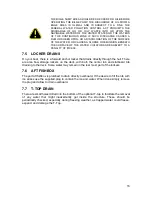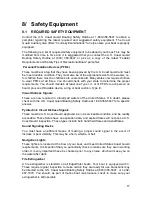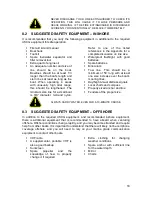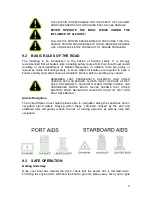
5
periodically check the streams for a steady flow of water. If water does not flow, shut off
the engine as this could indicate a problem with your cooling system, which will cause
engine damage if left ignored. Be especially watchful during navigation of shallow waters
as the intake ports can easily become clogged with weeds, dirt, or other debris.
3.3 PROPELLERS
Your boat uses propellers to move through the water. The propeller should always be
clean and free of damage, which adversely affects its performance. Your dealer can
assist you in the proper selection of a propeller for your boat. This selection is based on
the horsepower of the engine and its relationship to the size and weight of the boat.
Different propeller selections can dramatically affect the performance and fuel economy
of your boat.
Understanding Propeller Pitch
Two numbers determine propeller sizes. The first number denotes the diameter of the
propeller and the second denotes the pitch. Variations of these numbers changes the
load of the engine, as well as the strength of the propeller to “hold” water without
slipping.
With a larger number, you increase the theoretical movement of the boat, but also the
load on the engine. With an optimized propeller, the engine should be able to reach its
maximum operating RPM range at wide-open throttle (WOT) and full trim. High pitch
propeller selections may not allow the engine to reach this speed, and may
unnecessarily strain the engine. Low pitch propeller selections in which the engine
exceeds its maximum speed may increase engine wear, and decrease fuel economy.
IF YOUR BOAT CAME FROM THE FACTORY WITH A PROPELLER
SELECTED BY EDGEWATER AND YAMAHA ENGINEERING, IT
WILL BE ALREADY OPTIMIZED FOR YOUR PARTICULAR BOAT.
BEFORE CHANGING THE PITCH OR DIAMETER OF YOUR
PROPELLER, ALWAYS CHECK WITH YOUR DEALER TO
DETERMINE HOW THE CHANGES WILL AFFECT YOUR BOAT AND
ENGINE PERFORMANCE. CERTAIN MODIFICATIONS AFFECT
WEIGHT BALANCE AND/OR WIND RESISTANCE MAY REQUIRE A
PROPELLER CHANGE. ALWAYS CHECK WITH YOUR DEALER
FIRST IF OPTIMUM RPM CANNOT BE ATTAINED.
3.4 ENGINE POWER TILT AND TRIM
The power tilt and trim system on your outboard provides the operator with the freedom
to change the running angle of your boat, and to accommodate for variable load and sea
conditions. Moving the outboard lower unit towards the transom is referred to as
trimming “in” while moving the outboard lower unit away from the transom is referred to
as trimming “out”. The trim and tilt controls are located on the throttle levers located at
the helm.
It is best to trim the engines in for best acceleration from displacement to planning mode.
This will help bring the bow down and reduce the power needed to bring the boat onto
plane. Once on plane, the engine can be trimmed “out” which will reduce engine load,
and increase fuel economy. When operating the boat is shallow waters, you may need to
tilt the engines out of the water to reduce damage.
Summary of Contents for 262CX
Page 1: ...262CX ...
Page 5: ...ii ...




